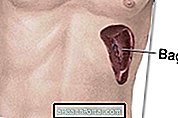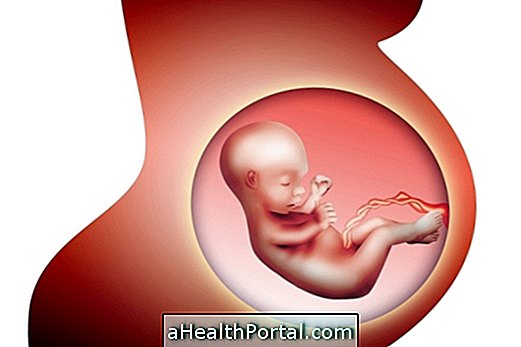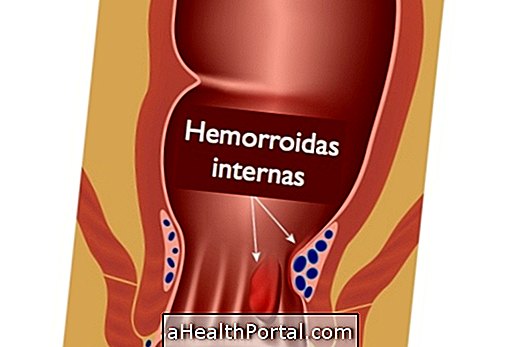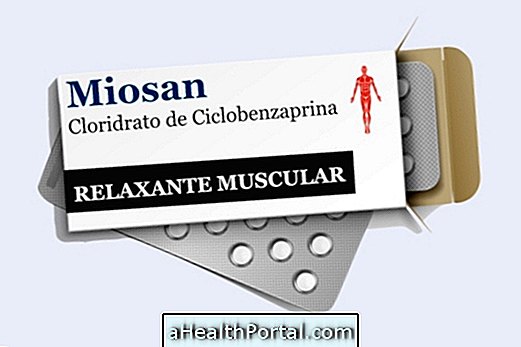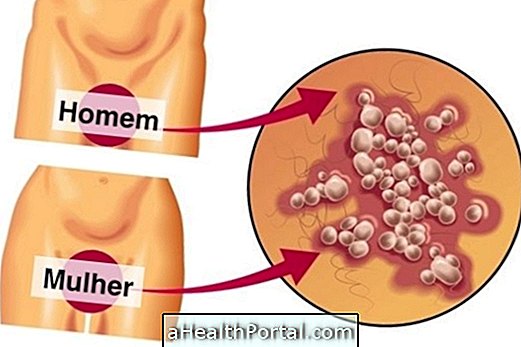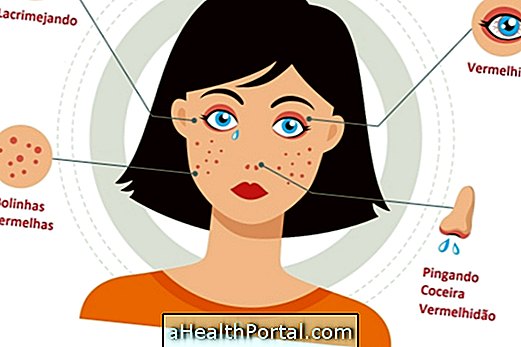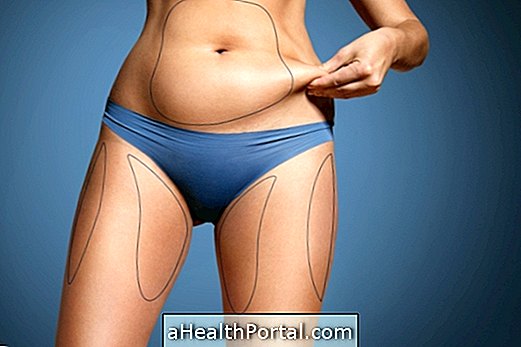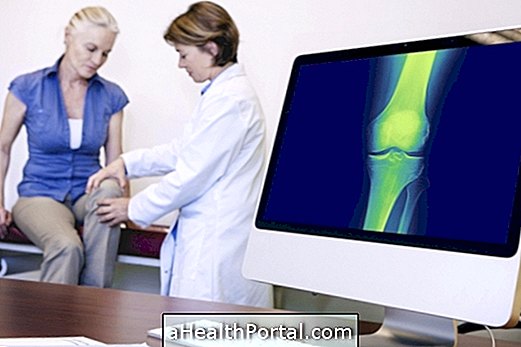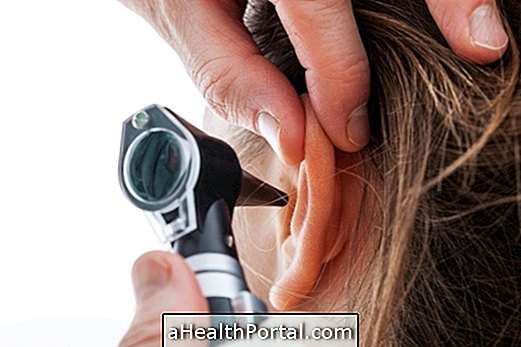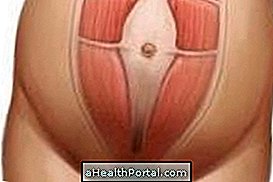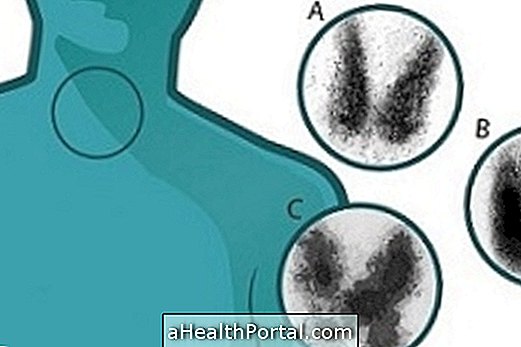Jaw pain is an uncomfortable situation that can happen as a result of a blow to the face, infection or bruxism, for example. In addition, pain in the jaw can be a symptom of temporomandibular disorder, also called TMD, which is a change in the functioning of the joint that connects the skull to the jaw, resulting in pain.
The pain in the jaw in most cases is limiting, that is, it causes difficulty to open the mouth, which directly interferes with speech and food. In some cases, swelling and pain in the ear may also be noticed, and in such cases, it is important to consult the general practitioner, so that tests are carried out to identify the cause of the pain and, thus, the most appropriate treatment can be started.
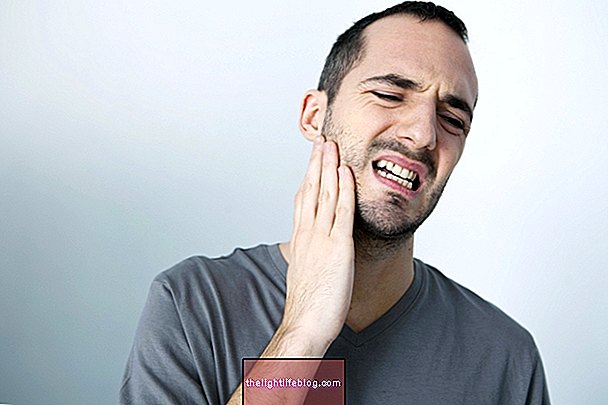
The main causes of jaw pain are:
1. Temporomandibular dysfunction
Temporomandibular disorder, also known as TMD, is the change in the functioning of the temporomandibular joint, which is the joint that connects the skull to the jaw and which is responsible for the movement of opening and closing the mouth.
Thus, when there is an alteration in this joint and in the muscles present in the jaw region, it is possible to feel pain and to hear a small noise when opening the mouth and when chewing, in addition to there may also be discomfort on the face, headache and swelling in one of the sides of the face.
What to do: In this case it is important to consult the dentist so that an assessment can be made and the most appropriate treatment can be recommended, which is usually indicated according to the symptoms presented by the person and the cause of TMD.
Thus, physiotherapy, use of dental plaque to sleep, massage on the face and use of anti-inflammatory drugs to relieve pain and discomfort may be recommended. However, when the pain does not improve or when other changes in the site are identified, surgery may be recommended. Learn more about TMD and how it should be treated.
2. Stroke in the face
The blow to the face can also cause damage to the jaw, especially if the impact is large enough to cause dislocation or breakage of the bone. Thus, depending on the impact, it is possible that other symptoms may appear besides the pain in the jaw, such as local swelling, bleeding and the presence of bruises, for example.
What to do: In the case of very strong blows, it is important to consult the doctor to check if there has been no detachment or fractures, as in these cases more specific treatment may be necessary, which may involve the use of bandages to keep the jaw in place , performing surgery to reconstruct the jaw, in case of fracture, in addition to physical therapy.
3. Bruxism
Bruxism is another situation often associated with jaw pain, as the act of grinding and clenching your teeth, unconsciously, can result in increased pressure in the jaw and contraction of the muscles in the region, resulting in pain. In addition, other signs and symptoms of bruxism do not wear the teeth, headache on waking and softening of the teeth.
What to do: It is important to consult the dentist to assess the degree of bruxism and to indicate the use of a dental plaque to sleep, which helps to prevent friction between the teeth, preventing the appearance of symptoms. See more details of the treatment of bruxism and main causes.

4. Dental problems
The presence of dental problems, such as gingivitis, caries and abscesses can also cause pain in the jaw, especially when these problems are not identified or treated according to the dentist's guidance. This is because, although it does not directly affect the jaw, it can result in compromised jaw and joint, resulting in pain.
What to do: It is recommended to follow the dentist's guidance to combat the cause of the pain, it is also important to maintain good oral hygiene, brushing teeth and tongue at least 3 times a day and using dental floss. In the case of dental abscesses, the use of antibiotics may be recommended.
5. Osteomyelitis
Osteomyelitis is characterized by infection and inflammation of the bones, which can reach the mandible and temporomandibular joint and cause pain, in addition to fever, swelling of the region and difficulty in moving the joint.
What to do: In the case of osteomyelitis, it is important to consult the general practitioner or dentist to request tests that confirm the diagnosis and allow the identification of the bacterium related to the infection, as it is thus possible that the most appropriate antibiotic to fight against microorganism is indicated.
In some cases, in addition to the use of antibiotics, it may be indicated by the dentist to perform surgery to remove the parts of the bone that were affected. It is important that osteomyelitis treatment is started as soon as possible, as this way it is possible to prevent the spread of the bacteria and the appearance of complications. Understand how osteomyelitis is treated.
6. Cancer of the jaw
Jaw cancer is a rare type of cancer in which the tumor develops in the jaw bone, resulting in pain in the jaw, the intensity of which worsens as the tumor develops, swelling in the region and neck, bleeding from the mouth, numbness or tingling in the jaw and frequent headache. Here's how to identify jaw cancer.
What to do: It is important to consult the general practitioner or an oncologist when the symptoms last for more than 1 week, as it is possible that tests that confirm the diagnosis are made and that the treatment starts immediately afterwards, preventing the progress of the disease.
Depending on the stage of the cancer, surgery may be indicated to remove as much tissue affected by the tumor cells, placement of prosthesis and radiotherapy sessions to eliminate cells that were not removed through surgery.
Check out the video below for more information on what to do in case of jaw pain:

Was this information helpful?
Yes No
Your opinion is important! Write here how we can improve our text:
Any questions? Click here to be answered.
Email in which you want to receive a reply:
Check the confirmation email we sent you.
Your name:
Reason for visit:
--- Choose your reason --- DiseaseLive betterHelp another personGain knowledge
Are you a health professional?
NoMedicalPharmaceuticalsNurseNutritionistBiomedicalPhysiotherapistBeauticianOther
Bibliography
- BRASÍLIA'S HEALTH SECRETARIAT. Temporomandibular dysfunction and orofacial pain. 2017. Available at:. Accessed on 04 Nov 2020
- SILVA, Pedro M. C. C. Pathology of the temporomandibular joint and otorhinolaryngological symptoms. Master's Thesis, 2017. Faculty of Medicine of Lisbon - University of Lisbon.
